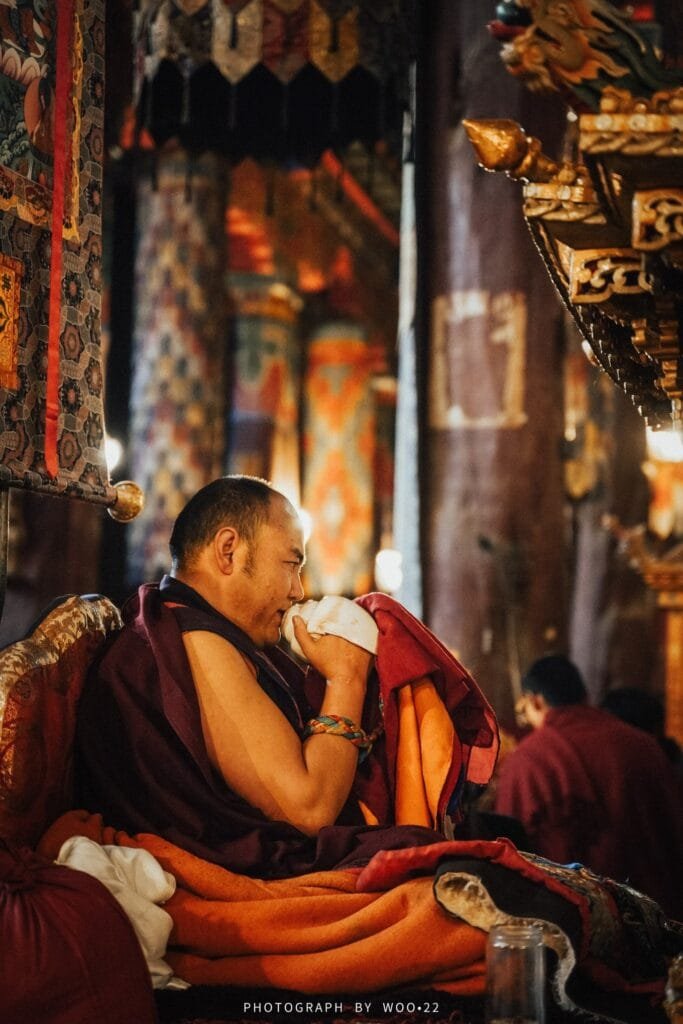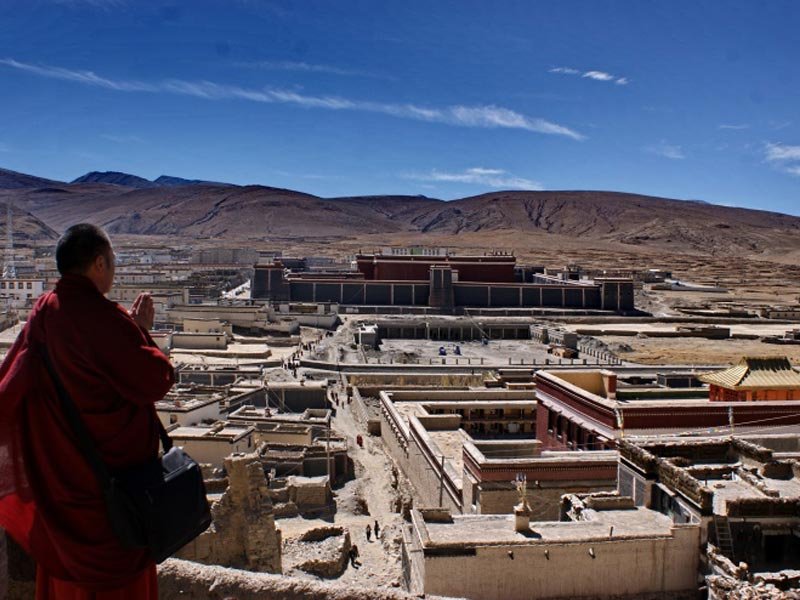Geographical Coordinates of Sakya County
Explore Sakya County, with its picturesque landscapes and rich cultural heritage. Nestled between the northern Himalayas, it is a captivating destination in the southern part of the Tibet along the south bank of the Yarlung Tsangpo River. Sakya County is positioned between 28.2° to 29.4° N latitude and 87.4° to 89.1° E longitude. Originally translated as “Sakya Dzong,” it holds historical significance dating back to the 11th century. The name “Sakya” derives from the monastery established by Khon Kunchok Gyalpo on the northern slope of the Drongchu River.
Historical Significance:
In the 13th century, the Yuan Dynasty established the local political power of Sakya, governing Tibet for nearly a century. Although it lost its ruling authority after the 14th century, the Sakya regime retained territories. The hereditary succession of Sakya lamas continuous holds power until 1959. Post-1959, it became part of the administration led by the local government.
Administrative Status and Division of Sakya County:
In 1956, the Sakya Administration Office was established, and on January 7, 1960, Sakya County (ས་སྐྱ་རྫོང་།) was formed by merging Sakya and Serin monastic districts. As of 2008, it comprises 2 towns, 9 townships, and 130 administrative villages, covering an area of 8,126 square kilometers. As of November 1, 2020, the resident population is 48,766, with the county government located in Sakya Town, approximately 150 kilometers from Shigatse City.
| Name | Chinese | Hanyu Pinyin | Tibetan |
|---|---|---|---|
| Towns | |||
| Sa’gya Town | 萨迦镇 | Sàjiā zhèn | ས་སྐྱ་གྲོང་རྡལ། |
| Gêding Town | 吉定镇 | Jídìng zhèn | དགེ་སྡིངས་གྲོང་རྡལ། |
| Townships | |||
| Xungmai Township | 雄麦乡 | Xióngmài xiāng | གཞུང་སྨད་ཤང་། |
| Maja Township | 麻布加乡 | Mábùjiā xiāng | རྨ་བྱ་ཤང་། |
| Zhungma Township | 雄玛乡 | Xióngmǎ xiāng | གཞོང་མ་ཤང་། |
| Tashigang Township | 扎西岗乡 | Zhāxīgǎng xiāng | བཀྲ་ཤིས་སྒང་ཤང་། |
| Chagjug Township | 扯休乡 | Chěxiū xiāng | བྲག་མཇུག་ཤང་། |
| Së Township | 赛乡 | Sài xiāng | སྲད་ཤང་། |
| Lalho Township | 拉洛乡 | Lāluò xiāng | ལ་ལྷོ་ཤང་། |
| Drag’rong Township | 查荣乡 | Cháróng xiāng | བྲག་རོང་ཤང་། |
| Molha Township | 木拉乡 | Mùlā xiāng | མོ་ལྷ་ཤང་། |
Notable Attractions and Special of Sakya:
Drongla Mountain Peak Observatory: Located 15 kilometers from the county seat, Drongla Mountain offers breathtaking views of the world’s highest peak, Mount Everest’s eastern slope, and the unique phenomenon known as the “Everest Flag Cloud.”
Drogon Chogyal Phakpa Cultural Square: Established in the ancient city of Sakya, this square serves multiple functions—primarily catering to tourism, citizen leisure, and urban emergency preparedness.
Sakya boasts traditional dance forms like “Sakya So,” traditional dramas like “Shar Gong,” acrobatic performances like “Sakya Jamkhan Tado,” Sakya Monastery’s religious rituals, and the traditional oil extraction technique—all recognized as regional intangible cultural heritage.



Geographical and Climatic Features of Sakya:
Situated between the Gangdise Mountains and the Himalayas, Sakya County features high mountains in the south and the Yarlung Tsangpo River valley plain in the north. With an average elevation of 4,400 meters, the region experiences a high plateau temperate semi-arid monsoon climate.
Annual sunlight hours reach 3,270, precipitation ranges from 150 to 350 millimeters, with occasional peaks at 400 millimeters. The frost-free period lasts from 70 to 110 days. The average annual temperature fluctuates between 5 to 6℃, reaching highs of 27℃ and lows of -20℃. Sakya is susceptible to natural disasters like droughts, hailstorms, floods, debris flows, landslides, and sandstorms.
Specialty Products of Sakya County
Sakya County, characterized by its dual identity as a semi-agricultural and semi-pastoral region, boasts unique agricultural and handicraft products. The fertile land spans 114,000 acres, cultivating crops such as barley, wheat, peas, and rapeseed. The expansive grasslands, covering 7 million acres, serve as the main grounds for raising yaks, hybrid yaks, yellow cattle, sheep, goats, horses, and mules.
Distinctive Products:
- Gold and Silver Jewelry: Renowned for its intricately crafted gold and silver jewelry, Sakya County’s specialty products include items like the “Choekong” (butter lamp bowl) and silver bowls. Some of these exquisite products have found their way to international markets.
- Sakya Tibetan Knives: The Sakya Tibetan knives are acclaimed for their high-quality steel, durability, and longevity. Craftsmanship and precision make these knives a distinctive and sought-after product.
- Medicinal Herbs: Sakya County is a treasure trove of precious medicinal herbs, including Cordyceps, Fritillaria, Rhubarb, and Snow Lotus Flower.
Tourism and Transportation of Sakya:
Sakya County is traversed by the China-Nepal Highway, with the county seat serving as the central hub radiating across the entire county. Key roads include County Road 204 (Jarak Line) and County Road, connecting all towns and villages. The county has a total road length of 415 kilometers, including one national highway (28 km), two county roads (172 km), and three township roads (66 km). The Lhasa Shigatse Railway will pass through Sakya County.
Travel Tips:
- Sakya is 178 kilometers away from Shigatse. Visitors can take buses from Shigatse to Sakya or opt for self-driving or chartered services.
- Local Sichuan-style restaurants in the county offer affordable meals. There are also Tibetan restaurants near Sakya Monastery, where you can savor authentic Tibetan cuisine, butter tea, and sweet tea.
- Accommodation options include hotels, guesthouses, and inns within the county.
- Sakya’s unique Tibetan dwellings, arranged neatly along the foothills to the plains, showcase distinctive architecture rarely found in Tibet.
Popular Monasteries and attractions in Sakya county:
Sakya County hosts several Tibetan Buddhist monasteries, each contributing to the region’s rich cultural and religious heritage. Notable monasteries include Sakya Monastery in the county seat, Choppu Monastery in Gyiding Township, Sachub Monastery in Sershang Township, Kyilung Monastery and Pema Choeling Monastery in Shungmar Township, and Chogo Lhunpo Monastery, Dungkar Choede Monastery, and Minjianlakang Monastery in Tashi Gang Township.
